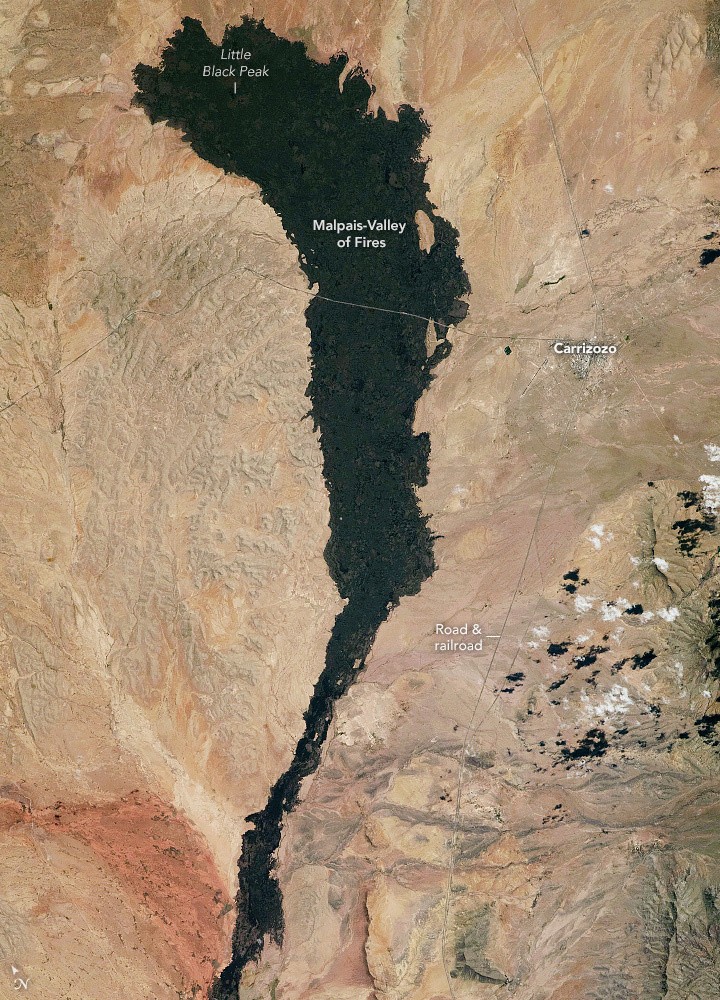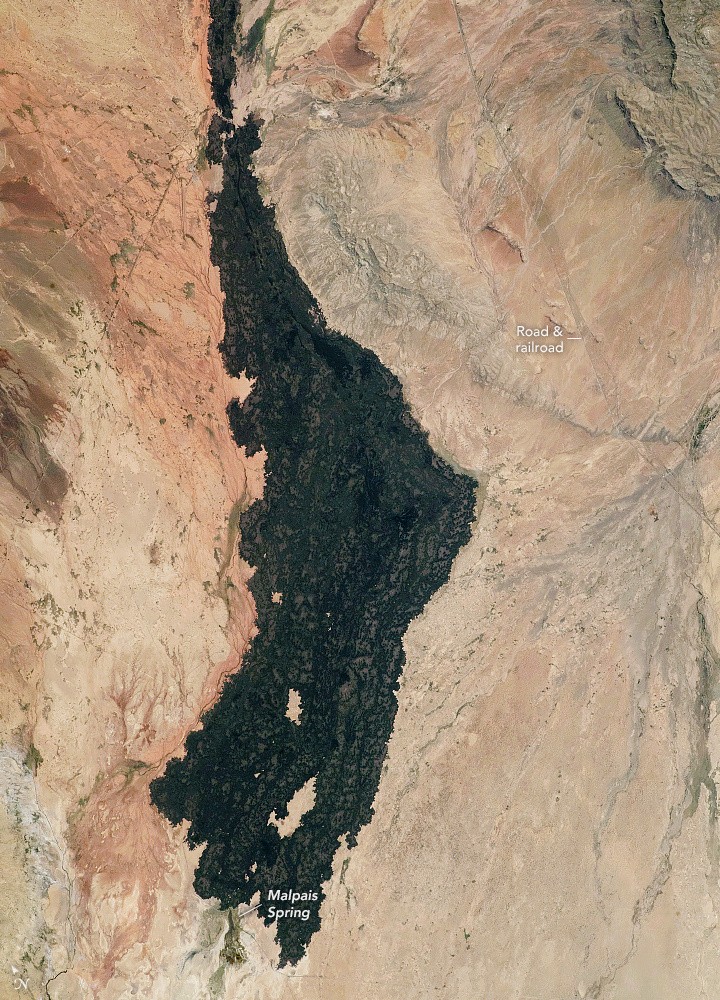An astronaut on board the International Space Station captured a series of images of the massive basaltic lava flow known as Carrizozo Malpa's in central New Mexico while in orbit over the Southwestern United States.
According to NASA, the mosaic was created by stitching the four photographs together.


Read also : NASA's Earth Observatory Discovers a New Baby Island After an Underwater Volcanic Eruption
Little Black Peak
The biggest shield volcano's highest peak is Little Black Peak, an inactive cinder cone found at Carrizozo Malpa's northern tip. Little Black Peak experienced a vent that erupted around 5,000 years ago and lasted for several decades, as per NASA Earth Observatory.
The incident produced one of the longest flows from the Holocene Epoch and the second youngest lava flow in New Mexico. It spans the Chihuahuan Desert for 50 miles (75 kilometers), from its northernmost to southernmost points.
The lighter spots that are strewn throughout the flow are either different kinds of lava features, like fissures, collapses, and depressions, or bare spaces devoid of lava.
NASA noted that within these features, desert plants could flourish, including juniper trees, perennial flowers, and prickly pear cactus.
The upper section of the lava flow is divided by a road, and a train connects it to the city of Carrizozo. The southern side of the flow extends into Malpa's Spring, located just to the north of the White Sands Missile Range.
NASA said that a crew member from Expedition 67 took the pictures. Lens artifacts have been eliminated, and the contrast has been increased and trimmed for the final images.
The International Space Station Program supports the laboratory as a component of the ISS National Lab to assist astronauts in taking images of Earth that will be most useful to researchers and the general public.
Related Article: NASA's James Webb Space Telescope Captures the Sharpest, Most Detailed Image of the Orion Nebula
This article is owned by Tech Times
Written by Joaquin Victor Tacla
ⓒ 2025 TECHTIMES.com All rights reserved. Do not reproduce without permission.




